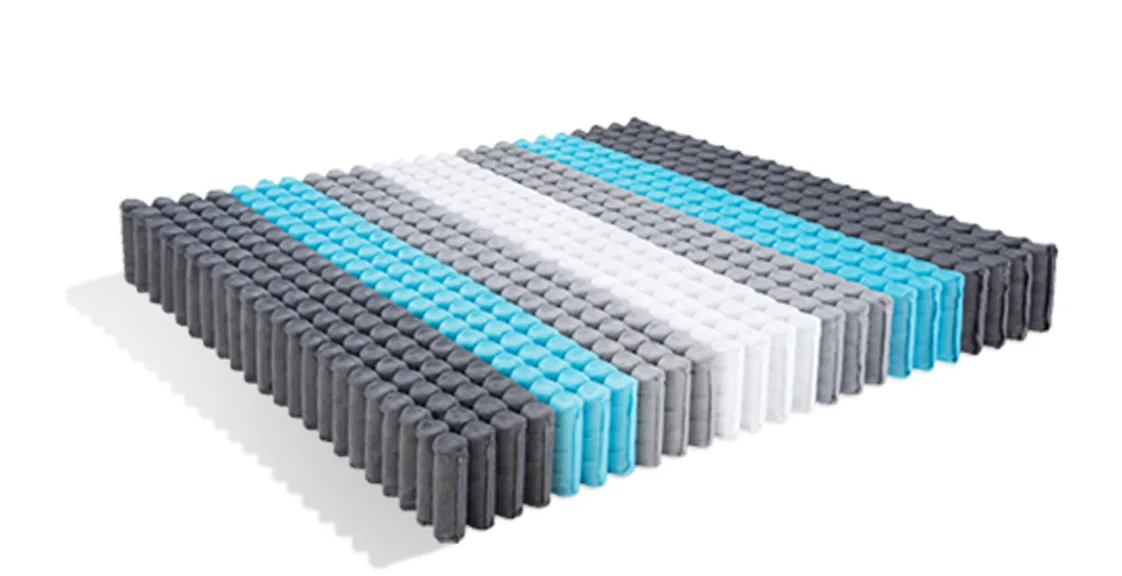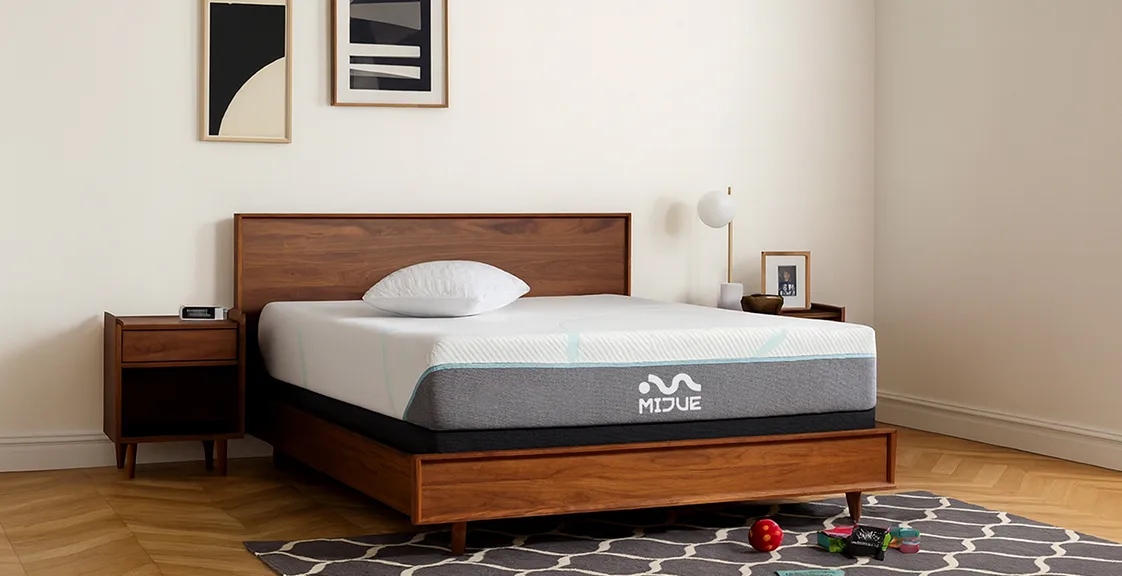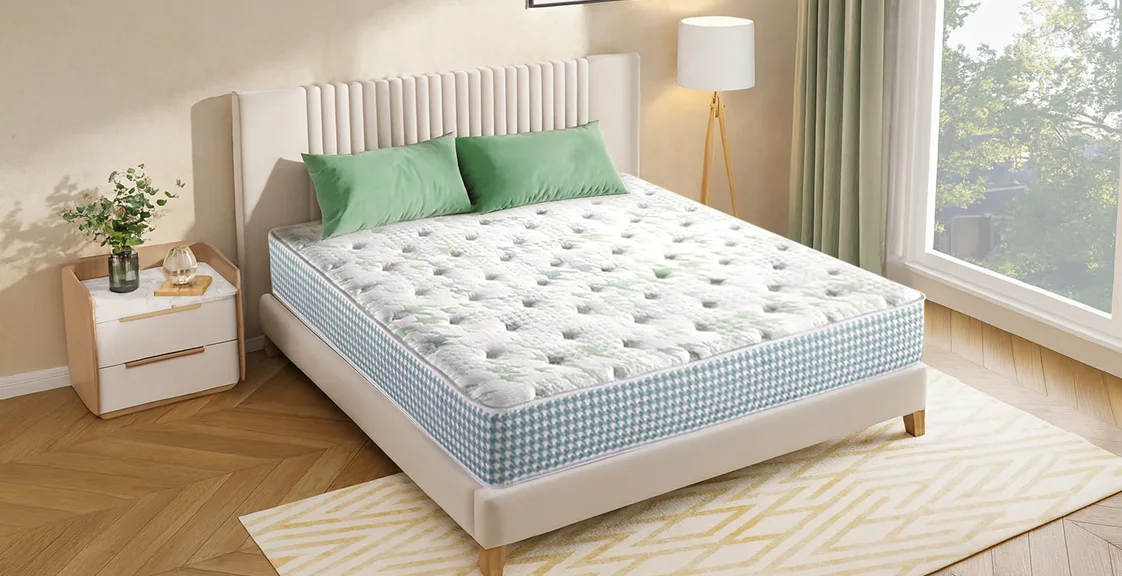A foam mattress and box spring combination is a common question for anyone upgrading their sleep setup. Memory foam and other foam-based mattresses are designed differently from traditional innerspring beds, and that difference affects the kind of foundation you need.
Choosing the right base ensures you get the best comfort, spinal alignment, and durability from your foam mattress. In this guide, we’ll cover whether foam mattresses need box springs, which alternatives work best, and how to set up your bed for optimal sleep.
1. What Is a Foam Mattress?
A foam mattress uses layers of polyurethane, memory foam, or latex foam to provide contouring comfort and pressure relief. Unlike spring mattresses, foam models rely on density and structure rather than metal coils to support the sleeper.
1.1 Key Features of Foam Mattresses
● Pressure Relief: Conforms to your body shape to reduce pressure on joints.
● Motion Isolation: Perfect for couples—no bounce transfer.
● Silent Support: No squeaks or creaks like metal coils.
● Durability: High-density foam can last up to 10 years with proper care.
● Flexibility: Compatible with various foundations—platforms, slats, or adjustable bases.
1.2 Disadvantages
● May trap heat if the base restricts airflow.
● Can lose shape if placed on uneven or soft surfaces.
2. What Is a Box Spring?
A box spring is a wooden or metal frame containing steel springs, covered in fabric. It traditionally supports innerspring mattresses by absorbing impact and adding height.
2.1 The Original Purpose
When coil mattresses dominated the market, box springs helped balance the motion and prevent sagging. But as foam and hybrid designs took over, their purpose began to fade.

3. Can You Use a Foam Mattress on a Box Spring?
Technically, yes—but it’s not recommended. Foam mattresses need solid, even support. The coils in a traditional box spring create gaps that allow foam to sag, reducing support and potentially voiding your warranty.
3.1 Why Box Springs Don’t Suit Foam Mattresses
● Uneven Support: Foam can sink between coils.
● Reduced Longevity: Uneven pressure wears out foam layers faster.
● Heat Retention: Limited airflow can trap heat.
● Warranty Issues: Many manufacturers require solid foundations.
If you’ve spent hundreds (or thousands) on a premium foam mattress, a poor base can ruin it within months.
4. Best Foundations for Foam Mattresses
If you want to replace the traditional box spring, here are better alternatives that provide proper support:
4.1 Platform Bed
A platform bed has a flat or slatted surface that offers even support across the entire mattress. It’s modern, sturdy, and eliminates the need for a box spring entirely.
● Ideal for all-foam and hybrid mattresses.
● Look for slats spaced no more than 3 inches apart.
● Allows great airflow and sleek design.
4.2 Adjustable Base
An adjustable base lets you raise or lower your head and legs with a remote control. It’s ideal for people who snore, have acid reflux, or want personalized comfort.
● Fully compatible with foam and hybrid beds.
● Promotes better circulation and spinal alignment.
4.3 Solid Foundation
A solid base made from wood or composite material gives consistent support. It’s often covered in fabric and looks similar to a box spring but without the inner coils.
● Prevents sagging and maintains mattress integrity.
● Commonly sold by foam mattress manufacturers.
4.4 Slatted Bed Frame
A metal or wooden slatted frame provides strong support with good ventilation.
● Keep slats evenly spaced.
● Works well for memory foam and latex mattresses.

5. The Science Behind Foam Support
Foam mattresses depend on compression and density to contour properly. When the surface beneath flexes—like with a box spring—the foam compresses unevenly, creating pressure points. Over time, this leads to back pain and structural breakdown.
That’s why manufacturers recommend rigid support. The base shouldn’t bend, bounce, or sag when pressure is applied.
6. Pros and Cons of Using a Box Spring with Foam
| Factor | Pros | Cons |
|---|---|---|
| Height | Adds extra elevation | May feel too bouncy |
| Airflow | Some ventilation | Can trap heat with solid bottom |
| Support | Basic structure | Gaps cause sagging |
| Durability | May extend spring bed life | Reduces foam mattress lifespan |
| Warranty | Usually not approved | Can void warranty |
7. How to Set Up a Foam Mattress Properly
● Choose the right base (platform, slats, or solid foundation).
● Check levelness: Place the base on an even floor surface.
● Unbox the mattress and let it expand for 24–48 hours.
● Use a breathable cover to protect from dust and moisture.
● Rotate every 3–6 months for even wear.
● Avoid direct floor placement to prevent mold growth.
8.FAQ
Q: Does a foam mattress need a box spring?
A: No. Foam mattresses require a solid or slatted foundation, not a flexible spring base.
Q: Can I use my old box spring with a new foam mattress?
A: Only if it has a solid top. Otherwise, it will void your mattress warranty.
Q: What’s the best alternative to a box spring?
A: A platform bed or solid foundation provides the most stable support for foam mattresses.
Q: Can I place my foam mattress directly on the floor?
A: It’s possible but not ideal—moisture and poor ventilation can lead to mildew.
Q: How long does a foam mattress last?
A: With proper care and support, 8–12 years on average.
Q: Where Can I Buy High Quality Foam Mattress?
A: MIJUE is a professional B2B manufacturer of high quality Foam mattress. We tailor our mattress solutions to meet the unique market requirements of each client, offering personalized product recommendations and configurations.Browse our selection for hybrid mattress developed specifically for commercial applications, such as hotels, or retail shops.




